Ned Pence on the Cascade Complex Fires of 2007
Note: the following essay and photographs are by Ned Pence, USFS (ret). Mr. Pence was a District Ranger on three different National Forests, including the Krassel District of the Payette NF. He is co-author (with his brother, Carl) of Lost in the Forest: A Story About the Forest Service “Four Decades of Change”. The photos in this essay have also been posted at SOSF Photo Page 1: Boise and Payette Post-2007 fires [here] where other photos by Ned Pence may be found. Some other posts about the Payette fires of 2007 may be found [here, here, here, here, here, here, here].
The Cascade Complex Fires of 2007
by Ned Pence
Below are some pictures I took on my recent trip to Yellow Pine, Idaho. It is difficult to write about the fires because, as it can be pointed out, I was not there in 2007. However, I have talked to Joe Harper the Krassel District DFR, and folks at Yellow Pine and the Zena Creek Ranch.
Harper states that the Cascade Complex was the result of a fire start in Zena Creek, another fire that started near Loon Lake on the Secesh River, and fires on the Boise NF that burned onto the Payette NF. All the fires burned together to make the Cascade Complex that burned from the headwaters of the South Fork of the Salmon River to the confluence at Mackay Bar. The fires stared in early July 2007 from a lightning bust and burned the rest of the summer. The area is of special interest to me because I was Krassel DFR from 1971 to 1976.
The Zena Creek Fire is interesting. The pictures of the East Zena Creek fire pattern show that the fire burned intensely in strips with other areas burned only as a light ground fire until it reached the unlogged upper part where it burned as a crown fire, spreading onto the old Circle End Fire (that burned in 1949 and again burned in 1992) where it found enough ground fuel to build up a head of steam. The fire then jumped the SFSR and burned with intensity along the East Fork of the SFSR, then jumped the East Fork and South Fork and burned south, eventually joining the Boise NF fires.
East Zena Creek in 2009 (click for larger image)
Folks at Yellow Pine pointed out that fire intensity was also a result of back fires set to protect Yellow Pine in the point protection strategy. I include one picture of an intense fire area in lower West Zena Creek. I believe this fire resulted from a back fire to protect the Zena Creek Ranch. Much of the West Zena Creek area burned only as a light ground fire, but beetles subsequently killed many trees that survived the fire.
West Zena Creek in 2009 (click for larger image)
Zena Creek is an steep area typical of the topography of the Idaho batholith. It was the first area in Region Four to be logged in the 1960’s using the skyline system to fly logs clear of the ground. The system was experimental in the 1960’s. The logging was stopped in 1967 by the Regional Forester due to sedimentation of the SFSR from earlier logging using ground systems especially the Idaho Jammer. In the 1960s the Brown Mill at McCall was only interested in ponderosa pine so the logging was selective, as may be seen in the pictures. The fire burned most intensely where the fuel loading was the heaviest.
The Zena Creek fire was manned in the initial phase by two jumpers because the Krassel helicopter crew had been pulled to the west side of the forest. The jumpers decided the fire was not safe and did not start initial attack. It is difficult for me to criticize that decision, but I can say that in my time as DFR we would have attacked it. Fire in Zena Creek is difficult to fight due to the steep topography. However, as the 2009 pictures illustrate there would have been opportunities to suppress that fire.
The Loon Fire was also declared unsafe to fight, and with the Boise NF fires blowing up the Payette NF went to an Appropriate Management Response with “Point Protection” as the fire management strategy. It is worth noting that the current forest plan does not include logging in the SFSR and the RARE II areas are waiting for Wilderness designation, so fuels management has not occurred.
Below are pictures showing the fire intensity in Goat Creek where the Boise NF fires entered the Payette NF. The fire in this area was very intense, burning in lodgepole pine with beetle kill. That fire entered an old fire in Caton Creek (that burned in the late 1930’s) where it found heavy fuel loads in beetle killed lodgepole, sending it with intensity into the Johnson Creek drainage where it burned north to join the Zena Creek Fire.
Below are pictures of sedimentation of the SFSR at Poverty Flat and Johnson Creek spawning areas. Note the black silt and white sand that is little changed from pictures I took in 2008. I could not see spawning redds from summer run Chinook salmon despite the reported large adult return run from tribe-planted smolts. Visually, the SFSR is much more sedimented than it was from logging in the 1960’s.
Johnson Creek in 2009 (click for larger image)
Fire rehab at Poverty Flat in 2009 (click for larger image)
Again, it is hard for me to criticize the decisions made on these fires because I was not there. All I can do is state that it would have been different in the 1970’s. And I will continue to monitor the results.
by YPmule
by Scott A.
Thank you Arlene and Ned for your continued devotion to forest health. And for getting the truth about how the USFS is mismanaging the forests to the people who ought to know.
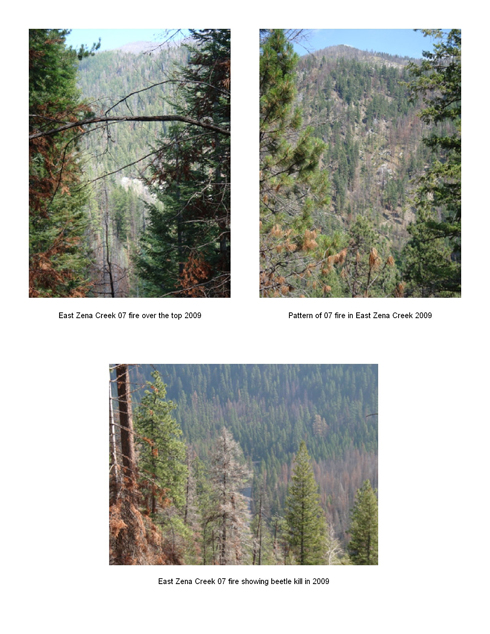
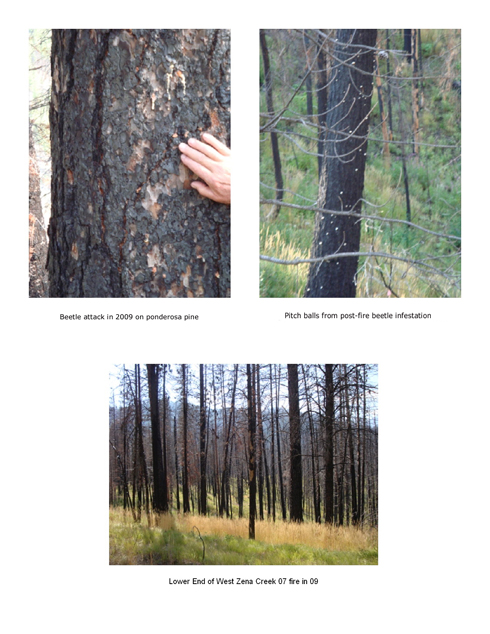
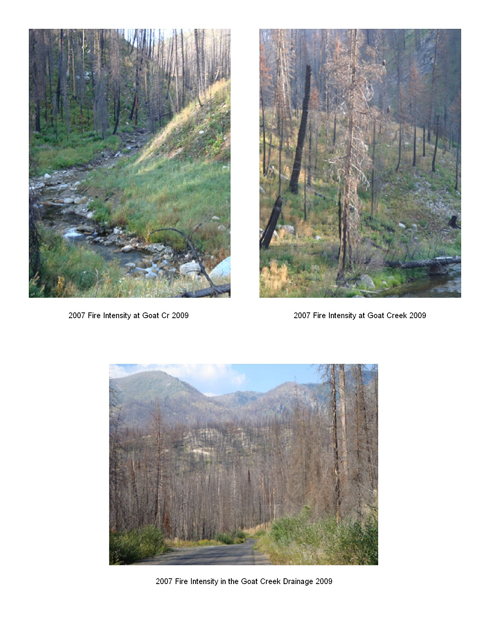
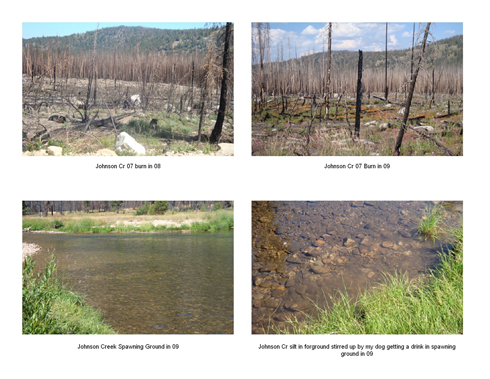
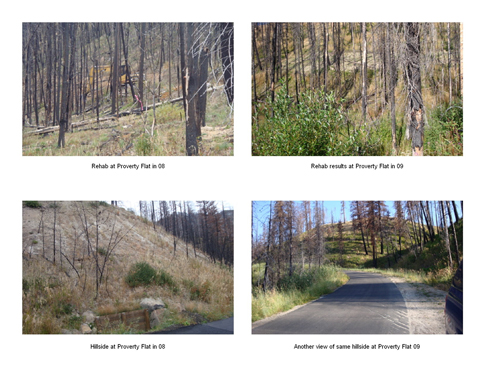

Thank you Ned and Arleen for coming up to Yellow Pine. It was so nice to get to visit with you folks. (And get my copy of “Lost in the Forest” autographed!)
rrSue
Yellow Pine